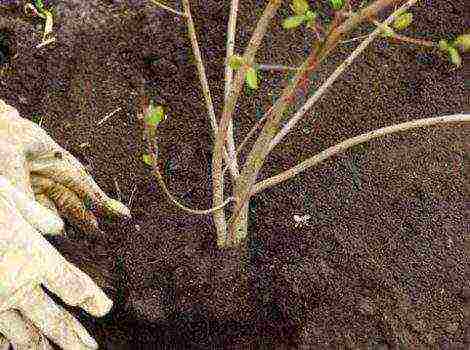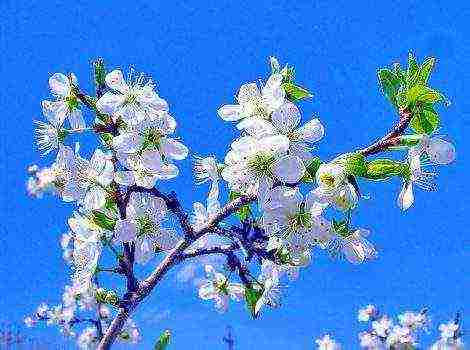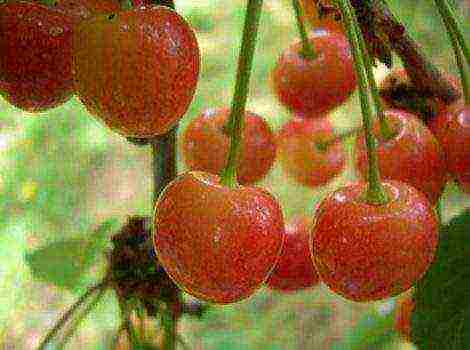Content
Ripening dates and description of the pear variety Lada
Lada is a classic pear variety that takes root well in any gardens in our country. Due to the huge number of positive qualities, this variety has won the fame of the most popular pear.
Lada is recognized as a summer variety, the ripening period is in mid-August. The average height of a pear is 2.5 m. The tree has a pronounced trunk. Its crown is of medium density, up to three years old it is funnel-shaped, and at the onset of the fruiting period it becomes pyramidal.
Description and history of the appearance of the pear variety Lada
Let's start with a description of the variety. The shoots of the pear are rather long, of medium thickness, slightly curved, in section they are rounded, brown in color. Leaves are dark green in color, small in size. The length of the petiole is 1.5–2.5 cm, the stipules crumble in the early stages.
The flowers are cupped. Each inflorescence contains 5–7 of them. The fruits are not very large, weighing 100-110 g, obovate. Their surface is smooth and shiny. Ripe pear has a yellow color with a pinkish tint on the sides.... The subcutaneous points are practically invisible. Lada's peduncle is short, there is no funnel. The flesh is whitish-yellow in color, grainy, of medium density and not particularly juicy. The fruit tastes sour-sweet without a pronounced aroma.
The Lada variety was bred by academicians Chizhov and Potapov. This pear is the result of crossing the varieties Olga and Lesnaya Krasavitsa. In 1993, the pear variety Lada was entered into the State Register for the Central, Central Black Earth and Middle Volga regions. Lada gained the greatest fame in the Moscow region.
Advantages and disadvantages
Lada has many advantages, which include:
- early maturity - a pear for 2-4 years from the moment of budding brings a full harvest;
- winter hardiness - even young trees planted in the fall are able to overwinter without shelter;
- high resistance to most diseases - Lada is resistant to scab and fire blight.
Of the minuses of this variety, they note:
- short shelf life of fruits - only 55–65 days at 0 ° C;
- low transportability - pears do not have good transport resistance.
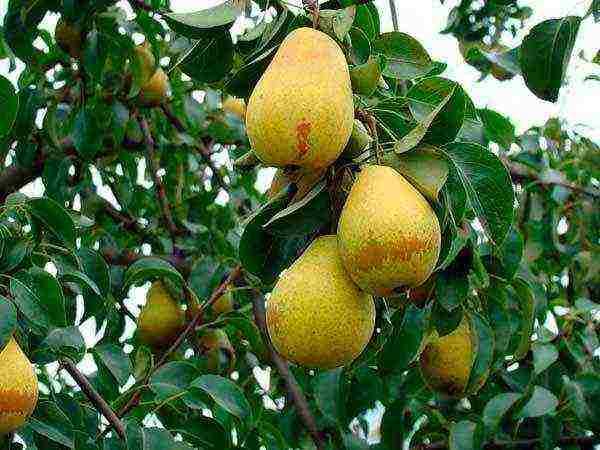
Landing
When planting seedlings, the season is of no small importance. It is best to plant the pear in the spring. In autumn, this should not be done, due to the likely weak formation of roots in the autumn-winter season.
Lada is not particularly demanding when choosing a soil, therefore it can grow almost anywhere. However, to increase yields, it is better to use drainage or black earth soil for planting.
The selected area is preliminarily dug up and fertilizers are applied: compost, potassium salt and superphosphate.
The dimensions of the recess for the seedling should be larger than the size of the rhizome, so that the tree is freely positioned when planting. In most cases, the depth is 70 cm and the diameter is 100 cm.
When the plants are immersed in the hole, they control that the root collar necessarily peeks out 5–7 cm, and the roots are carefully straightened and sprinkled with soil where the seedling was grown. At the last stage of planting, the soil near the pear is well compacted and watered, and a small amount of manure or humus is poured around the plant. At the end of all the actions, the tree trunk is carefully tied to the dug-in stake.
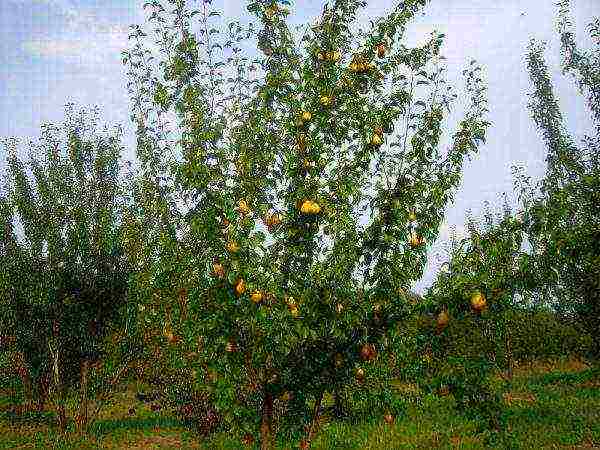
Care
The pear is often watered only during periods of prolonged drought, since very frequent watering damages the root system and provokes all kinds of diseases of this variety. The plant may even completely die due to excess moisture. Watering is carried out abundantly, 2-3 buckets of water under one tree. Also, moisture in the pear is needed at the beginning of summer, when the fruits are poured.
In early spring, the tree is fed with nitrogen fertilizers. They do this when the snow melts and dry weather sets in.
Dried and damaged branches that appear after winter are cut off. The stem part of the tree trunk is usually treated with iron red lead or lime.
In the autumn, mineral fertilizers are used. They are added in October. In winter, the pear also needs proper care. It is necessary to ensure that during warming, wet snow does not adhere to the branches of the tree. The weight of the snow layer can easily break thin twigs. The stem is not covered, since the pear is highly frost-resistant.
Lada pears are pruned twice a year: in spring and autumn. Unnecessary branches are cut, very long ones are made shorter with a sharp pruner so as not to cause a lot of damage to the fruit plant. Then the places of the cuts are treated with garden putty.

Ripening and harvesting
Lada is a fast-growing variety of the early ripening period. With proper care and regular pruning, fruits appear 3-4 years after planting. The first pears are harvested in early August, and the main harvest falls in the second half of this month. A mature tree produces about 50 kg of fruit annually.
Pears are firmly attached to the stalk and fall off only when fully ripe. Thanks to this, it is possible to harvest in mid-September, when the pear fruits become amber-golden in color and blush appears.
The storage conditions for pears are as follows: darkened room, positive temperature 1–4 ° C, humidity - not less than 85% and good ventilation. Fruits are neatly placed in plastic boxes or wooden boxes. Spread the fruits in a selected container in layers, which are separated with thin clean paper or dry straw. Do not create more than two layers.
Lada pears are stored for 2–2.5 months. In addition, pears can be kept in the sand. When stacked in wooden boxes, sand the layers of fruit. Thus, the fruits can hold out until November.
Peculiarities
- Lada is considered a self-fertile variety;
- fruits are smaller than average;
- this pear is distinguished by high and regular fruiting
- the fruits hang on the tree for a long enough time, and do not crumble.
Protection of an adult tree from diseases and pests
Lada has good resistance to scab and fire blight. But at the same time, it is impossible to exclude the possibility of infection with these diseases, as well as other diseases and insect pests.
Pest control begins before the period of sap flow. To do this, 700 g of urea is dissolved in one bucket of water and the trunk and the ground around the pear are treated.
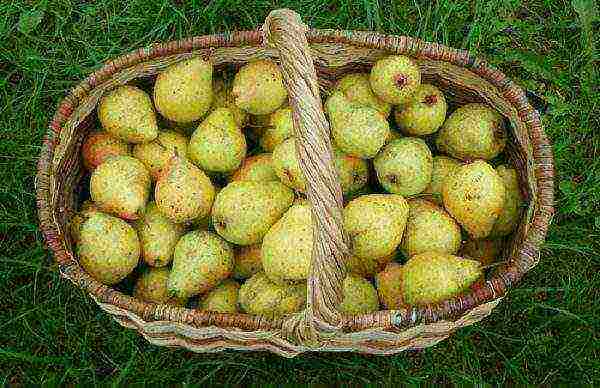
This event destroys all pests that have successfully survived the winter cold and frost on the plant.
But if you process the pear with this solution later, then the swelling kidneys will burn.
To avoid diseases such as scab, fire blight, fruit rot, powdery mildew and rust certain rules must be followed, namely:
- Spray the tree three times in time from the beginning of bud opening to the ripening of all fruits, regardless of the presence of the disease.
- Remove fallen leaves in time and remove weeds.
- Avoid increased dryness or excessive moisture content in the soil.
The pests of this variety are: gall mite, pear honeydew, aphids, moth and flower beetle.
The main measures for pest control:
- Planned treatments with special solutions against parasites are most effective here.
- The destruction of weeds is imperative, since they are carriers of various pests.
- Regular and careful observation of the appearance of the trunk, branches and leaves on the pear.
Despite the fact that the variety was bred relatively recently, Lada has already become widespread in most Russian regions.
Such popularity of this pear variety is facilitated by its ability to take root in areas with low and changeable temperatures, unpretentiousness to care and significant yield indicators. Since Lada belongs to the early ripening varieties, you do not need to wait long for the moment to enjoy delicious and juicy fruits.
